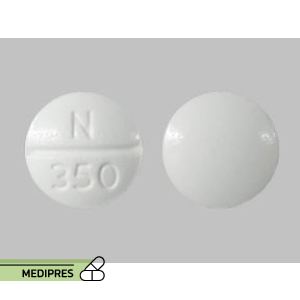
Hydrochlorothiazide and enalapril
23 June, 2023
Hydromorphone
23 June, 2023Hydrocodone and Homatropine Tablets
Generic name:
Hydrocodone and Homatropine
Drug class:
Opioid analgesic combined with anticholinergic agent
Dosage form:
- Tablets
Root of administration:
Oral
Dose:
- Typically 5 mg hydrocodone and 2.5 mg homatropine per tablet
- Dosing varies by indication; usually 1 tablet every 4 to 6 hours as needed
- Maximum daily dosing varies; consult prescribing information
Mechanism of action:
Hydrocodone is a semi-synthetic opioid agonist that binds to mu-opioid receptors in the central nervous system, producing analgesia and cough suppression. Homatropine is an anticholinergic agent that reduces gastrointestinal motility and secretions, and its inclusion helps deter intentional overuse of hydrocodone due to unpleasant anticholinergic effects at higher doses.
Drug usage cases:
- Management of moderate to moderately severe pain
- Relief of cough (less common and varies by formulation)
- Off-label: sometimes used for analgesia with reduced abuse potential due to homatropine addition
Drug contra indications:
- Hypersensitivity to hydrocodone, homatropine, or any component of the formulation
- Significant respiratory depression
- Acute or severe bronchial asthma in unmonitored settings
- Known or suspected paralytic ileus
- Use of monoamine oxidase inhibitors (MAOIs) currently or within the last 14 days
- Severe hepatic impairment
Side effects:
- Constipation
- Drowsiness, sedation
- Dizziness
- Nausea and vomiting
- Dry mouth
- Blurred vision
- Urinary retention
- Confusion
- Respiratory depression (potentially life-threatening)
- Hypotension
- Pruritus
- Headache
- Abdominal discomfort
- Tachycardia (due to anticholinergic effects)
- Hallucinations or agitation (rare)
- Dependence and withdrawal symptoms with prolonged use
Warnings:
- Risk of addiction, abuse, and misuse leading to overdose and death
- Use with caution in patients with respiratory disorders; may cause respiratory depression
- Concomitant use with other CNS depressants may increase sedation and respiratory depression
- Monitor for signs of serotonin syndrome when combined with serotonergic drugs
- Use caution in elderly or debilitated patients; increased sensitivity to opioids
- May impair mental and/or physical abilities required for potentially hazardous tasks
- Anticholinergic toxicity risk particularly in elderly or in overdose
- Do not abruptly discontinue in physically dependent patients; risk of withdrawal
- May cause QT prolongation and arrhythmias in overdose
- Use with caution in patients with increased intracranial pressure or head injury
Use during pregnancy or breastfeeding:
Hydrocodone crosses the placenta and may cause neonatal opioid withdrawal syndrome if used chronically during pregnancy. It may also cause respiratory depression in the neonate. Use only if the potential benefit justifies the potential risk to the fetus.
Homatropine’s risks during pregnancy have not been well studied; its anticholinergic effects could negatively affect fetal development.
During breastfeeding, hydrocodone is excreted in breast milk and can cause sedation and respiratory depression in the nursing infant. Breastfeeding is not recommended during treatment. Consult healthcare provider regarding alternative pain management options.



